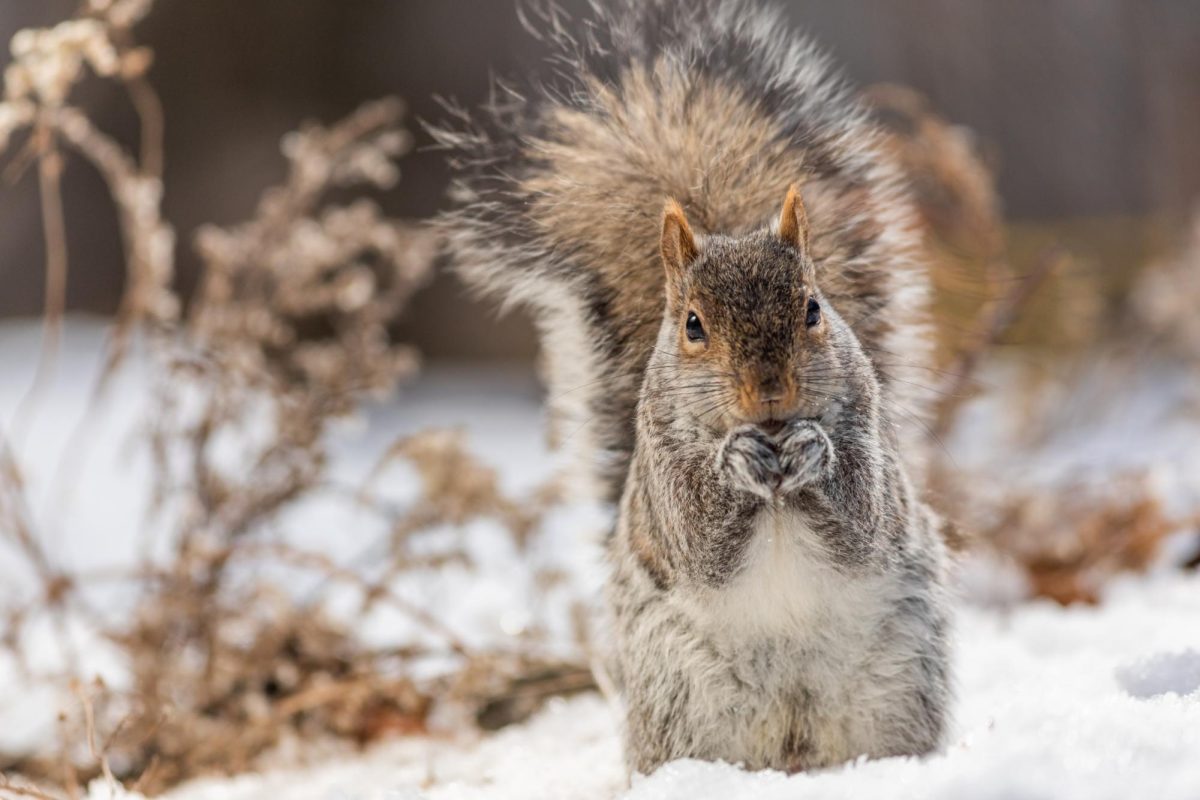Squirrels get ready for the winter by gathering as much food as they can. Squirrels that you see in your day–to–day life are called the Sciurus carolinensis but more commonly known as an Eastern gray squirrel. These squirrels stay in trees. They do well in urban areas like Lincoln Park for example. These mammals do not hibernate. In the winter, squirrels spend less time foraging outside their dens, and it is more common for several squirrels to share a den. This behavior allows more animals to take shelter and keep each other warm. Squirrels also prepare for the winter by “bulking up”, which means eating a lot more.
Throughout the fall, squirrels maximize food consumption and body mass. When food is hard to come by, squirrels reserving their food will help them survive. Squirrels also cache or hoard, a behavior characterized by storing stashes of food for later. Squirrels usually do this by putting their food in a shallow hole and covering it up. They do not remember all these “storage units,” and some of the forgotten seeds they leave behind will germinate and become shrubs, trees, etc. The stashes that are remembered will serve as food when resources are scarce in winter. Multiple squirrels will share the same den together and use each other’s body heat to stay warm. Acorns, nuts, berries, and tree bark are some things that squirrels eat and store.








